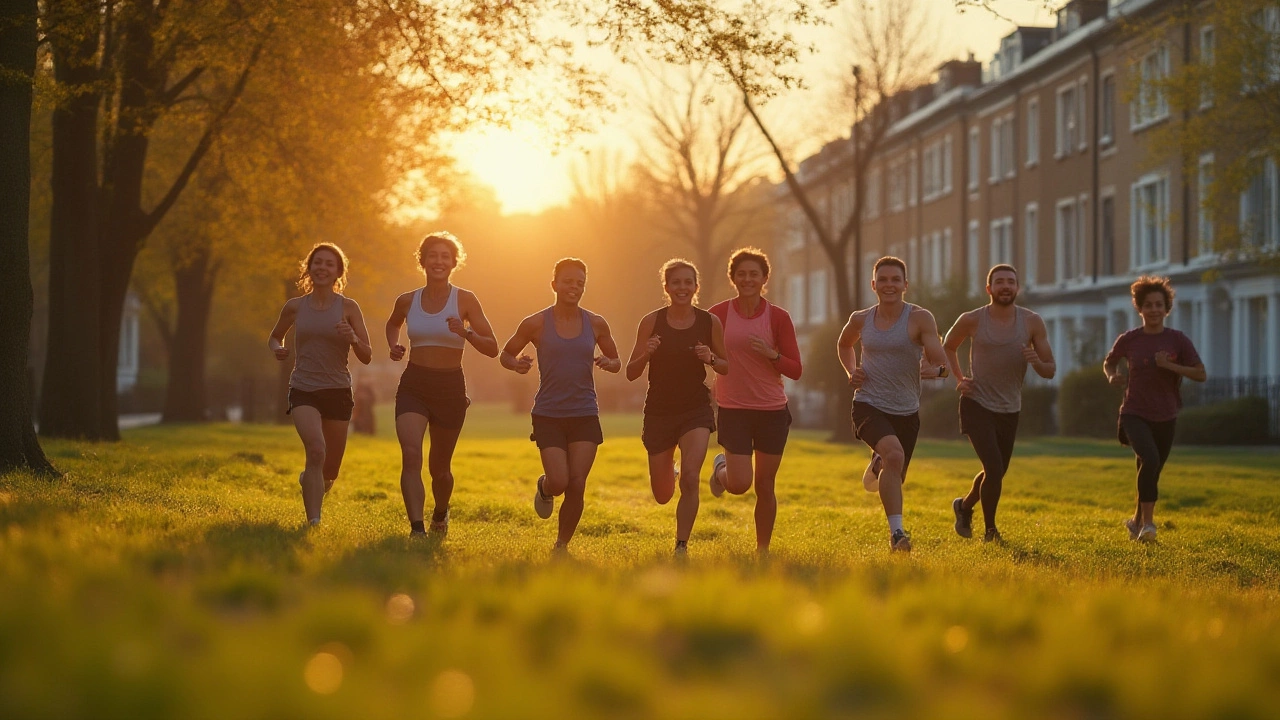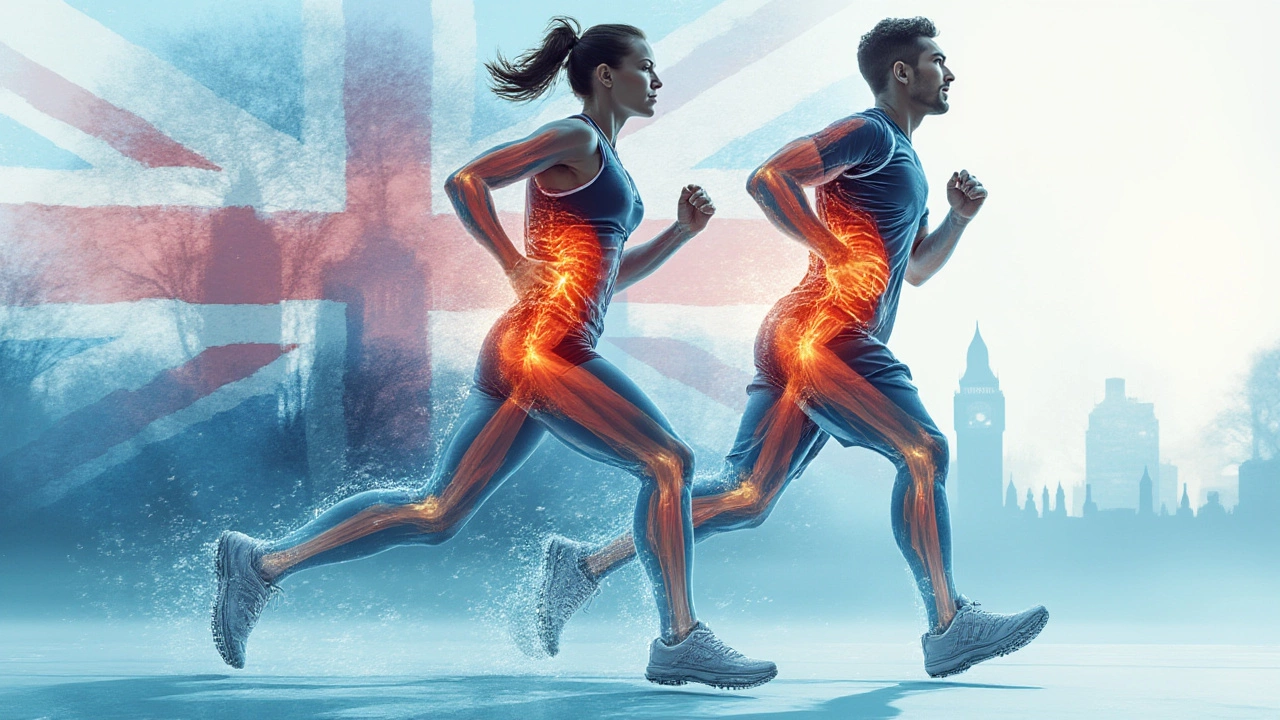
Your colleague claims jogging alone gave her a flat, sculpted stomach. Your uncle says it’s all genetics. A friend points to TikTok challenges promising six-pack abs after a month of running. With so much noise, it’s easy to wonder what’s true. If you’re secretly hoping those daily jogs after work or school runs will finally reward you with chiseled abs, you’re definitely not alone. Out on Auckland’s Tamaki Drive, I see as many hopeful ab-chasers in neon running shoes as runners training for their first marathon. Let’s get into what jogging actually does (and doesn’t do) for your abs — and what you need to know if a defined core is genuinely your goal.
Understanding Abs: What Actually Makes Them Show?
Let’s clear up one myth before we begin: everybody has ab muscles, but for most of us, they’re playing hide and seek beneath a layer of belly fat. The world’s most searched fitness question — “How do I get abs?” — usually comes down to fat percentage, not magic exercises. Your abs aren’t rare unicorns hiding somewhere inside you: even people who’ve never done a single sit-up still have a rectus abdominis (the technical term for the six-pack muscle). Whether you ever see them has a lot to do with how much fat lies in front of them.
Here’s something scientists have confirmed in research: spot reduction isn’t real. In one well-known study, participants did hundreds of ab exercises for weeks and lost fat everywhere but not specifically from their bellies (Google the Journal of Strength and Conditioning Research paper from 2011 if you want hard proof). So, if you’re picturing jogging as a way to whittle away belly fat only, that’s wishful thinking. Fat loss isn’t local; it’s systemic. When your body burns fat, it does so from all over.
That said, core visibility is influenced by several things: your genetics, body fat percentage, muscle size, and diet. Some people snap into visible abs at 20% body fat; for others — especially women — it’s often closer to 18% or lower. Male runners might see theirs near 12-14%. These numbers aren’t rules, but general roadmaps. Hormones, age, and yes, your favorite midnight snacks all play a part.
Here’s what matters most: to see your abs, you need two things — (1) burn enough overall body fat, and (2) have well-developed ab muscles underneath. Is jogging enough to check both these boxes? Let’s keep going.

How Jogging Affects Your Body: Fat Loss, Muscle, and Metabolism
Jogging is one of the oldest, easiest, and cheapest ways to get moving. It’s been shown to boost heart health, strengthen your bones, and even improve your mood (ever heard of a runner’s high?). When it comes to fat-burning, jogging absolutely helps: Regular running is a steady calorie-burner. According to Harvard’s health researchers, someone weighing 70kg (155 lbs) burns about 300 calories jogging at a moderate pace for 30 minutes. Table time! Check out how running stacks up:
| Activity | 30 Minutes (70kg person) |
|---|---|
| Jogging (10 min/mile) | 298 calories |
| Walking (15 min/mile) | 149 calories |
| HIIT Running | 450+ calories |
| Strength Training | 112 calories |
Sticking with a regular jogging habit can help you burn fat over time — but there’s a catch. Fat loss happens if you’re burning more calories than you’re eating. Chasing the mythical “afterburn effect” from running only works if you keep your nutrition in check. Late-night chocolate in front of Netflix? Sorry, that can undo an entire 5km run.
Let’s talk muscle. Jogging does engage your core — you have to keep yourself upright, after all — but it’s not going to bulk up those ab muscles dramatically on its own. Jogging is mostly a cardiovascular workout. It’s fantastic for heart and lungs. Yes, you’ll get better at using your core to stay balanced and keep good posture, especially on trails and uneven ground. Long runs on Auckland’s winding volcanic hills? Core challenge accepted. But unless you’re doing sprints, intervals, or hilly repeats, your ab muscles mostly get an endurance workout, not the hypertrophy (muscle growth) stimulus that makes them pop.
One little-known perk: regular jogging can bring down your stress hormone levels (like cortisol), which is shown to be linked to midsection fat for many adults. Chronic stress = more stubborn belly. So managing stress with regular runs and rest days helps indirectly, too. It’s not just about what you burn — it’s about how your body chooses to store fat.

Tips for Getting Abs: Jogging, Diet, and Smarter Training
If you’re aiming for visible abs, don’t ditch your morning jogs. But add these tips to make sure all your hard work pays off.
- Don’t ignore diet: The classic fit-pro line “abs are made in the kitchen” holds up. Create a moderate calorie deficit and prioritize protein — it helps you lose fat, feel fuller, and protects your muscle. I keep protein-packed Greek yogurt in my fridge for easy snacks between chasing after Seraphina and walking Artemis.
- Mix up your runs:
- Try intervals: Once or twice a week, sprint for 30 seconds, walk or jog for 90, repeat 6-8 times. This kind of high-intensity running continues burning calories after you’re done.
- Hill sprints: Auckland isn’t short of hills (Mount Eden, anyone?). Charging up an incline forces your core and hip flexors to work much harder, which adds to the ab activation.
- Add direct core training: Classic planks, bicycle crunches, hanging knee raises, and even standing anti-rotation exercises (look up “Pallof press” on YouTube) are brilliant to build muscle in your core. Just jogging? Abs stay slim and functional, but not much bigger or bolder.
- Dial in your sleep and recovery: Lack of sleep, high stress, or always being on the go (hello, working mums and dads) can spike your hunger hormones. Prioritize 7-8 hours a night. Your abs — and brain — will thank you.
- Track your progress: Fat loss is slow and unglamorous. Use a tape measure on your waist, progress photos, or how your jeans feel. If possible, body fat calipers or a DEXA scan (if you’re super keen) tell you more than a bathroom scale ever will.
- Watch for biological differences: Women hold more stubborn belly fat (especially after kids, as I can confirm personally), while guys might see abs sooner. Be kind to your body; genetics play a part and comparing yourself to Instagram fitness models is never actually helpful.
- Stay consistent: Runners who jog three to five times a week, mix up their runs, watch their food, and add in some targeted core work improve their chances way more than going hard for a month and quitting by week five.
The bottom line? Jogging is awesome for burning calories, helping with fat loss, managing stress, and building a foundation for a strong midsection. But if you want visible abs, you need a smart combination of steady running, specific ab exercises, and dialed-in nutrition. No fancy gadget or thirty-day challenge will shortcut the process. You can absolutely run your way to a leaner, stronger core — just don’t expect jogging alone to do all the heavy lifting (or crunching). So, lace up, keep moving, and remember: the real reward isn’t just showing off your abs, it’s the feeling you get from being fit, strong, and in control. And maybe, just maybe, you’ll make some furry running buddies as committed as Artemis and Nimbus along the way.
